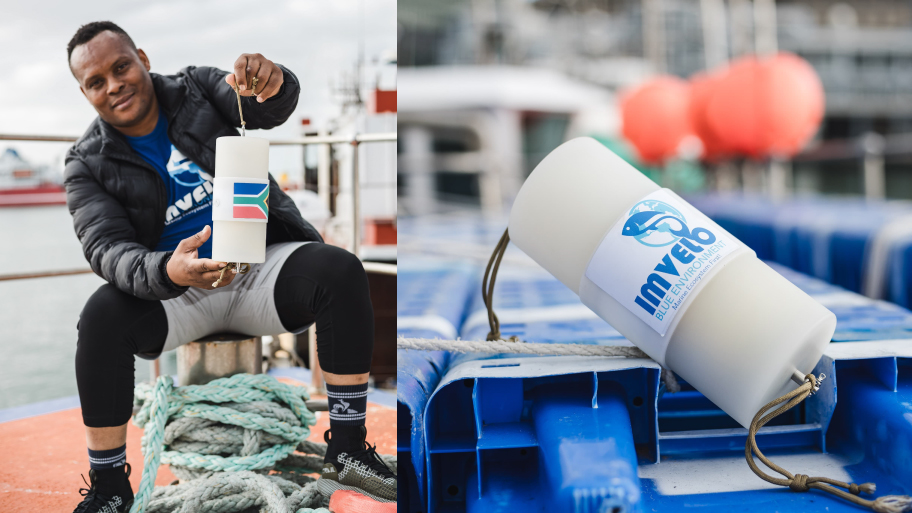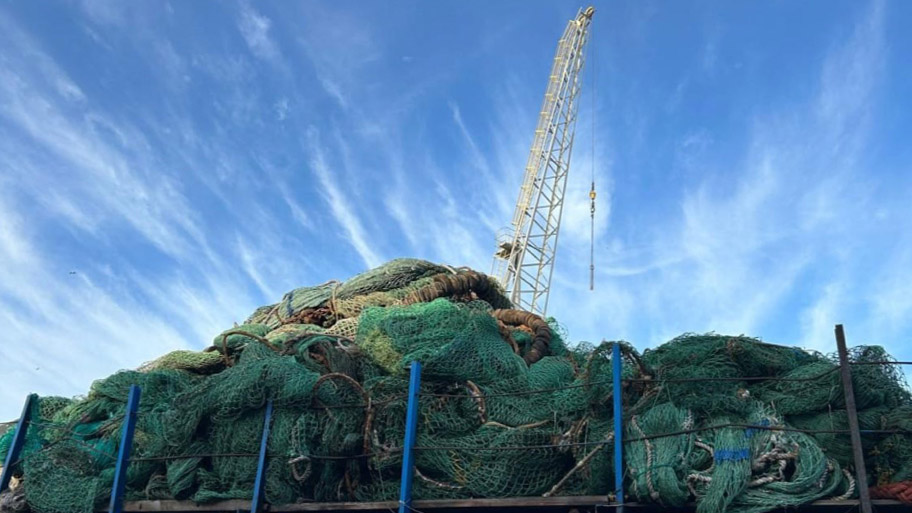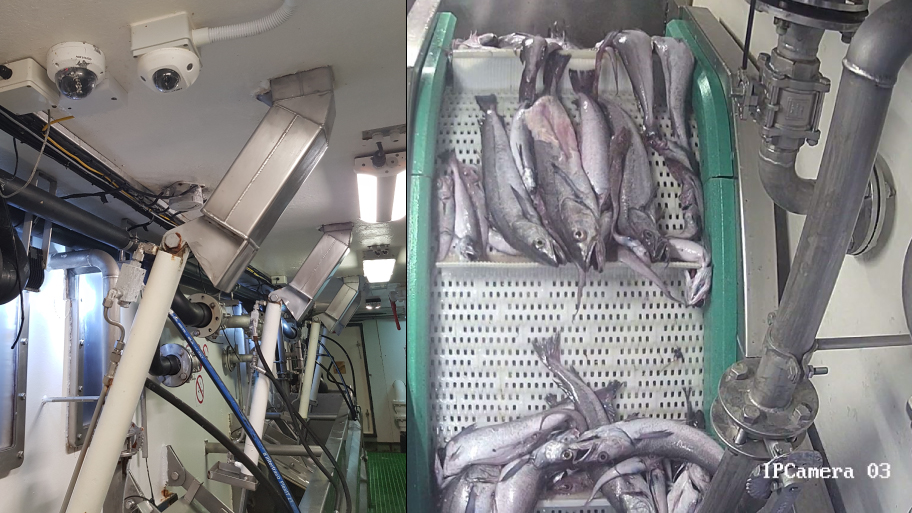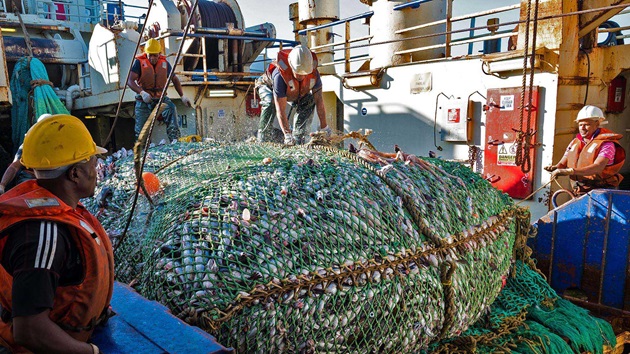Certified since 2004 and successfully reassessed three times, the South African trawl fishery for hake is now taking proactive steps to meet the best-practice requirements under the updated MSC Standard.
To support this transition to the updated MSC Fisheries Standard (V3.1), the South African Deep-Sea Trawling Industry Association (SADSTIA) has been awarded a Science and Research Fund grant from the MSC Ocean Stewardship Fund (OSF) of £25 000 (about R610 000).
The grant will enable the implementation of three forward-looking project components in collaboration with Imvelo Blue Environment Consultancy, OCEAN Action Network and the University of Cape Town’s Department of Biological Sciences. Each component aims to improve the environmental performance of the trawl fishery for hake by enhancing monitoring systems and strengthening regulatory compliance.
Dr Johann Augustyn, secretary of SADSTIA has welcomed the grant, noting its broad conservation impact. “This grant is a great opportunity to bolster our work and is of huge conservation value. These pilot projects encourage the use of technologies to minimise impacts on endangered, threatened or protected (ETP) species, reduce the loss of gear and ghost gear impacts, and mitigate the impacts on marine ecosystems.”
Enhancing seabird protection with smart monitoring
One component of the OSF-project aims to verify compliance with Bird Scaring Line (BSL) deployment. BSL’s are a proven technique for preventing interactions between seabirds and fishing gear. They consist of a length of rope from which six to ten brightly coloured streamers are hung. The streamers flutter in the wind and scare birds away from the stern of a fishing vessel where they may be accidentally injured or killed by fishing gear. To be effective, BSLs must be used every time fishing gear is deployed.
Imvelo Blue Environment Consultancy have developed an innovative electronic tension sensor that attaches directly to BSLs. In development since 2020, the sensor works by continuously measuring the tension exerted by the BSL when it is dragged through the water, and then transmitting data in real-time, wirelessly to onboard and remote systems. This enables shore-based observers to confirm the proper use of the BSLs during fishing activities.
The electronic tension sensor, developed in partnership with BirdLife South Africa with technical assistance from Nelson Miranda of Argonaut Science, has received support from the Agreement on the Conservation of Albatrosses and Petrels. To date, the electronic tension sensor has been installed on 10 hake vessels in South Africa.
 Imvelo Blue founder Sihle Victor Ngcongo with bird-scaring line tension sensor device © Imvelo Blue Environment Consultancy
Imvelo Blue founder Sihle Victor Ngcongo with bird-scaring line tension sensor device © Imvelo Blue Environment Consultancy
Tackling the problem of ghost gear through recycling
Another component of the project focuses on addressing the growing problem of end-of-life fishing nets and nets that have been lost or abandoned at sea. Ghost gear poses a major threat to marine ecosystems by entangling wildlife, damaging sensitive habitats like coral reefs, and contributing to plastic pollution.
In collaboration with OCEAN Action Network, a pilot project will see the installation of a first self-contained micro-recycling pod at a site donated by the V&A Waterfront on the Collier landing wharf in Cape Town harbour. End-of-life trawl nets (typically made from synthetic polymers like nylon, polyethylene, polypropylene and polyester) will be delivered to the pod where they will be recycled into densified materials suitable for reuse in the production of high-value plastic goods.
Project partner Ocean Plastic Technologies (OPT) has developed innovative micro-recycling systems housed within repurposed 20- or 40-foot shipping containers. These mobile units are specially retrofitted to serve as fully functional recycling facilities, offering a compact and scalable solution for sustainable waste management. Using OPT’s proprietary technology, the fishing nets are dismantled, cleaned, dried and densified, recycling the material into a valuable resource. Each unit is equipped with a compact system that includes shredding, washing, drying and granulation processes.
To enhance transparency and traceability, OPT also uses a blockchain-based app that records the origin and movement of the material, ensuring a secure and verifiable track-and-trace system throughout the recycling process.
“For the past three years, I’ve been talking to the industry about finding a solution to the problem of used fishing nets,” said Estelle van der Merwe, project lead from OCEAN. “The support was always there, but the challenge was logistics – baling, storage, and finding appropriate processing technology. That changed when Oliver Nudds and Thomas Hansen at OPT came on board.”
Van der Merwe brings decades of experience in environmental protection to the net recycling initiative. Since 2022, she has collaborated with SADSTIA and fishing companies I&J, Oceana and Sea Harvest, to develop sustainable solutions for recycling or upcycling end-of-life fishing nets and ghost gear.
 Old trawl fishing nets © Mike Sands, Oceana | OCEAN Action Network
Old trawl fishing nets © Mike Sands, Oceana | OCEAN Action Network
Leveraging AI to monitor bycatch and stock
The third project component involves a partnership with the University of Cape Town’s Department of Biological Sciences to develop artificial intelligence (AI) tools for onboard monitoring of fish catches. The AI software analyses footage taken by cameras installed onboard factory trawler vessels. It automatically identifies and quantifies catches of hake and associated bycatch species, including ETP species.
Trained using real-world fishing imagery, the AI software will boost accuracy in data collection, streamline bycatch reporting, and reduce the need for manual review, significantly improving the efficiency of fisheries’ monitoring.
Monitoring fish catches at sea has traditionally relied on three primary sources of data: offloaded catch records at harbours, onboard observations by human observers and government-led scientific surveys. While this combination offers a comprehensive overview, each method has its limitations, particularly the reliance on human observers.
To support and enhance observer efforts, the new initiative is turning to technology – specifically onboard cameras and AI. The first step involves recording all fishing activity on video. However, reviewing video footage manually is as time-consuming as onboard observation. To overcome this, researchers are now developing AI tools that can automatically analyse the footage, identify species and count the number of fish caught.
This approach not only boosts data reliability but also frees observers to focus on tasks that require human judgement, ultimately enhancing fisheries management and sustainability efforts.
 Cameras installed on vessels automatically record fish as they move on conveyor belts. Footage is then analysed by AI software trained to identify species © University of Cape Town
Cameras installed on vessels automatically record fish as they move on conveyor belts. Footage is then analysed by AI software trained to identify species © University of Cape Town
A model for fisheries sustainability
As the South African hake trawl fishery moves toward its fourth recertification, these pioneering efforts underscore its leadership in sustainability and its potential to inspire broader change throughout the industry.
“The South African hake trawl fishery has been a committed participant in the MSC program since 2004. Maintaining their certification in an ever-evolving sustainability landscape has required ongoing efforts to meet best-practice levels and we’re very pleased to have been able to provide support to this exciting project,” said Michael Marriott, MSC Program Director based in Cape Town. “We hope that successful trials will lead to widespread uptake of technology-based solutions such as these.”
Co-authored with & Tessa O'Hara, FishMedia


